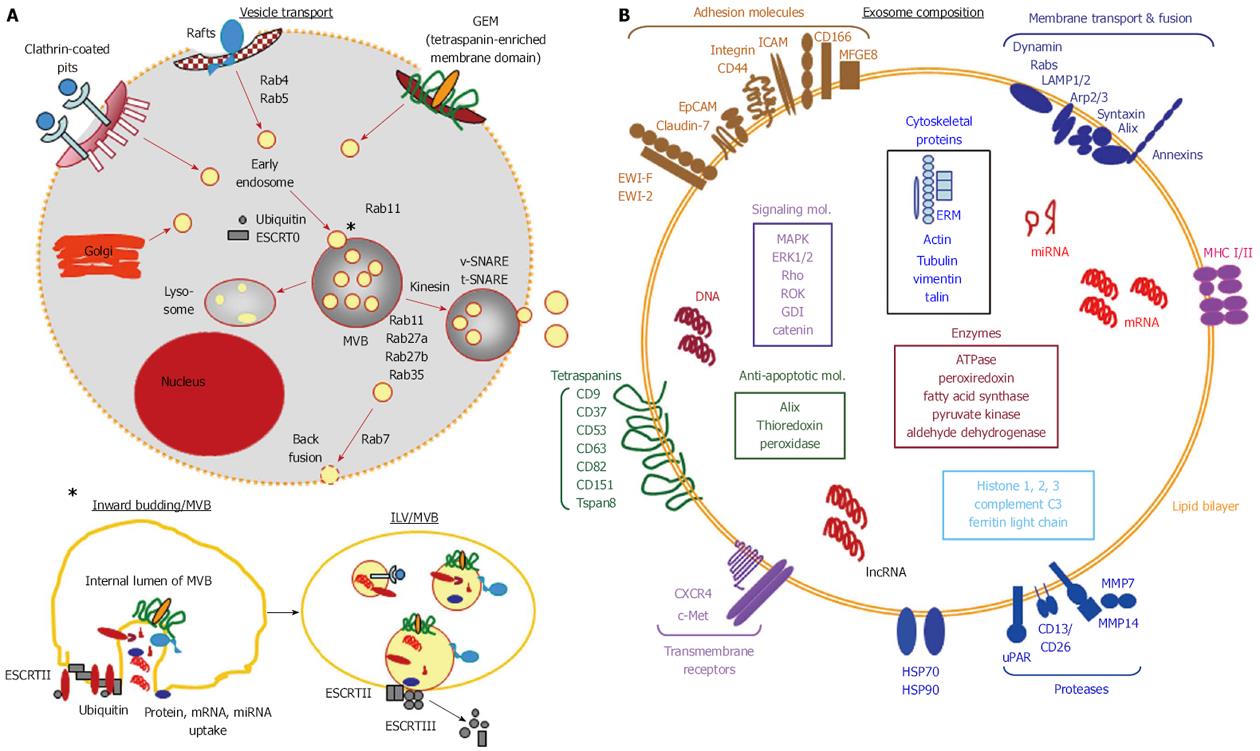Copyright
©The Author(s) 2016.
World J Gastroenterol. Jul 14, 2016; 22(26): 5971-6007
Published online Jul 14, 2016. doi: 10.3748/wjg.v22.i26.5971
Published online Jul 14, 2016. doi: 10.3748/wjg.v22.i26.5971
Figure 1 Exosome biogenesis and release.
A: Exosome biogenesis is initiated by the generation of early endosomes delivered by the Golgi complex or by invagination of defined membrane microdomains such as clathrin coated pits, rafts and glycolipid enriched membrane microdomains, which are by scission separated from the originating membrane. Early endosomes are budding into multivesicular bodies During this process the small cytoplasm of endosomes is loaded with proteins, mRNA and DNA. The invaginated early endosomes dissociate from the membrane of multivesicular bodies and are then called intraluminal vesicles. Early endosomes and multivesicular bodies are guided along microtubuli by transporter proteins and transporter complexes, where monoubiquitination, different Rabs, ESCRT complexes and SNARE proteins account for distinct guiding routes; B: Exosomes are characterized by a lipid bilayer enriched in cholesterol, sphingomyelin, GM3 and phosphatidylserine and membrane proteins that vary with the donor cell and the originating membrane microdomain, tetraspanins being a constitutive and highly enriched component. Signal transduction and cytoskeletal proteins are mostly recruited via the association with the inner plasma membrane. Cytosolic proteins, coding and noncoding RNA and DNA are selectively recruited. Of note, to our knowledge, all CSC markers are recovered and enriched in exosomes. CSC: Cancer stem cells; GEM: Glycolipid-enriched microdomains; ESCRT: Endosomal sorting complex required for transport; MVB: Multivesicular bodies; ILV: Intraluminal vesicles.
- Citation: Heiler S, Wang Z, Zöller M. Pancreatic cancer stem cell markers and exosomes - the incentive push. World J Gastroenterol 2016; 22(26): 5971-6007
- URL: https://www.wjgnet.com/1007-9327/full/v22/i26/5971.htm
- DOI: https://dx.doi.org/10.3748/wjg.v22.i26.5971









